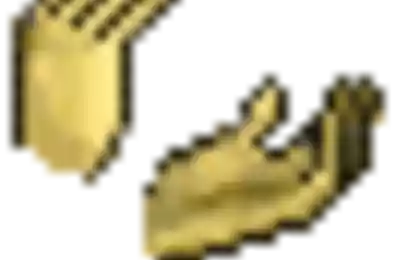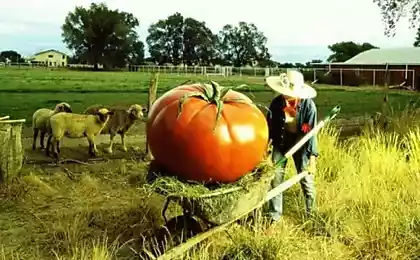112
Report on the use of GMO crops in the world
The State of Commercialized Biotechnology Crops in the World in 2013
The International Service for the Application of Agro-Biotechnologies is a non-profit international organization that promotes biotechnologies and GMO products worldwide and publishes an annual report with which we give below. Unfortunately, the report does not contain data on the impact of biotech/GMO crops on the environment and the health of living creatures, including humans.
Areas under biotech crops continued to grow and exceeded 175 million hectares in 2013, in both large and small developing countries, occupying a leading position in the world.
A record 175.2 million hectares of biotech crops were planted worldwide in 2013, with an annual growth rate of 3%, about 5 million hectares compared to 170 million hectares cultivated in 2012. This 2013 was the 18th year since commercialization began, 1996-2013, and growth continued for 17 consecutive years; and in particular, in 12 of 17 years, growth rates were double-digit.
Biotech crops have grown more than 100-fold from 1.7 million hectares in 1996 to more than 175 million hectares in 2013, making biotech crops the most rapidly adaptable crop technology in recent history. This measure of adaptation speaks for itself in terms of its sustainability and the benefits it provides to farmers and consumers.
Of the 27 countries that grew biotech crops in 2013 (Table 1 and Figure 1), 19 are developing countries and 8 were industrialized countries. Each of the top 10 countries, 8 of which were developing, sowed more than 1 million hectares, providing a broad-based global foundation for continued and diversified growth into the future. More than half of the world’s population – 60% or ~4 billion people – live in 27 countries growing biotech crops.
Latin American, Asian and African farmers together cultivated 94 million hectares, or 54 percent of the world’s 175 million biotech hectares (up from 52 percent in 2012), compared with industrialized countries from 81 million hectares, or 46 percent (up from 48 percent in 2012), nearly doubling the ha gap from 7 million to ~ 14 million between 2012 and 2013, respectively. This trend will continue. This contradicts the predictions of critics who, prior to the commercialization of the technology in 1996, had prematurely stated that biotech crops were only beneficial to industrialized countries and would never be.
Developing countries, in particular small-scale poor farmers.
In the period 1996-2012, total economic profits in industrialized countries amounted to $59 billion, compared with $57.9 billion received by developing countries. In addition, in 2012, developing countries received less profit – 45.9% equivalent to $8.6 billion of total profits of $18.7 billion, while industrialized countries received a profit of $10.1 billion. Brookes and Barfoot, 2014, in print.
________________________________________________________________
19 mega-countries growing 50,000 or more hectares of biotech crops
** Rounded to the nearest 100,000 hectares
Source: agracultura.org/
The International Service for the Application of Agro-Biotechnologies is a non-profit international organization that promotes biotechnologies and GMO products worldwide and publishes an annual report with which we give below. Unfortunately, the report does not contain data on the impact of biotech/GMO crops on the environment and the health of living creatures, including humans.
Areas under biotech crops continued to grow and exceeded 175 million hectares in 2013, in both large and small developing countries, occupying a leading position in the world.
A record 175.2 million hectares of biotech crops were planted worldwide in 2013, with an annual growth rate of 3%, about 5 million hectares compared to 170 million hectares cultivated in 2012. This 2013 was the 18th year since commercialization began, 1996-2013, and growth continued for 17 consecutive years; and in particular, in 12 of 17 years, growth rates were double-digit.
Biotech crops have grown more than 100-fold from 1.7 million hectares in 1996 to more than 175 million hectares in 2013, making biotech crops the most rapidly adaptable crop technology in recent history. This measure of adaptation speaks for itself in terms of its sustainability and the benefits it provides to farmers and consumers.
Of the 27 countries that grew biotech crops in 2013 (Table 1 and Figure 1), 19 are developing countries and 8 were industrialized countries. Each of the top 10 countries, 8 of which were developing, sowed more than 1 million hectares, providing a broad-based global foundation for continued and diversified growth into the future. More than half of the world’s population – 60% or ~4 billion people – live in 27 countries growing biotech crops.
Latin American, Asian and African farmers together cultivated 94 million hectares, or 54 percent of the world’s 175 million biotech hectares (up from 52 percent in 2012), compared with industrialized countries from 81 million hectares, or 46 percent (up from 48 percent in 2012), nearly doubling the ha gap from 7 million to ~ 14 million between 2012 and 2013, respectively. This trend will continue. This contradicts the predictions of critics who, prior to the commercialization of the technology in 1996, had prematurely stated that biotech crops were only beneficial to industrialized countries and would never be.
Developing countries, in particular small-scale poor farmers.
In the period 1996-2012, total economic profits in industrialized countries amounted to $59 billion, compared with $57.9 billion received by developing countries. In addition, in 2012, developing countries received less profit – 45.9% equivalent to $8.6 billion of total profits of $18.7 billion, while industrialized countries received a profit of $10.1 billion. Brookes and Barfoot, 2014, in print.
________________________________________________________________
19 mega-countries growing 50,000 or more hectares of biotech crops
** Rounded to the nearest 100,000 hectares
Source: agracultura.org/
Children egoism—how to deal with it
Damien Walters is the first person ran through the "dead loop" (video)





















